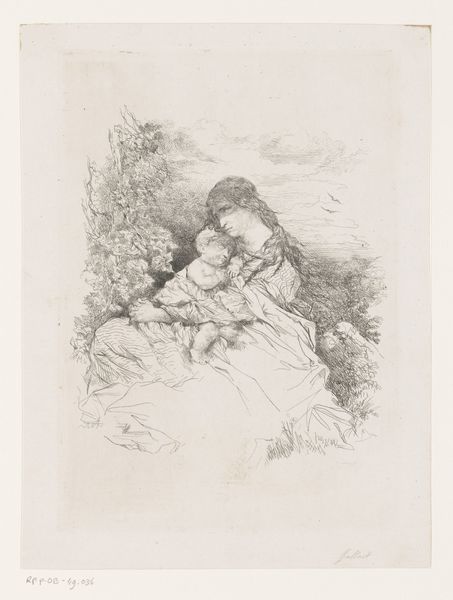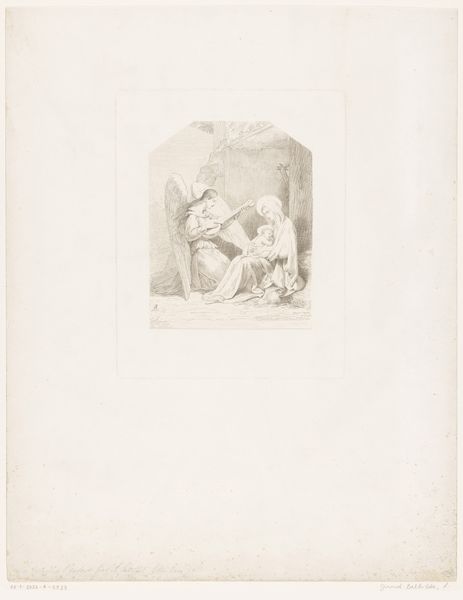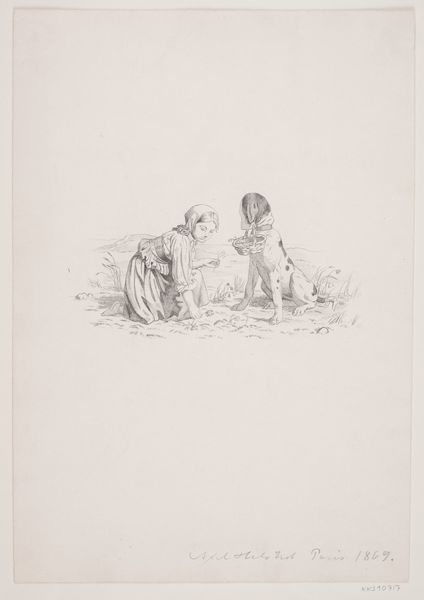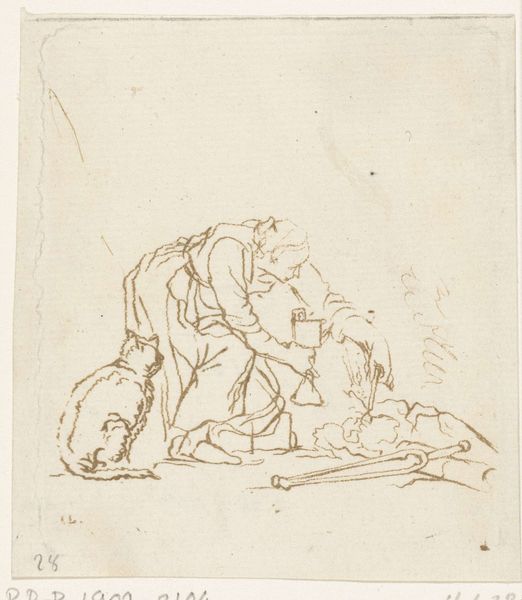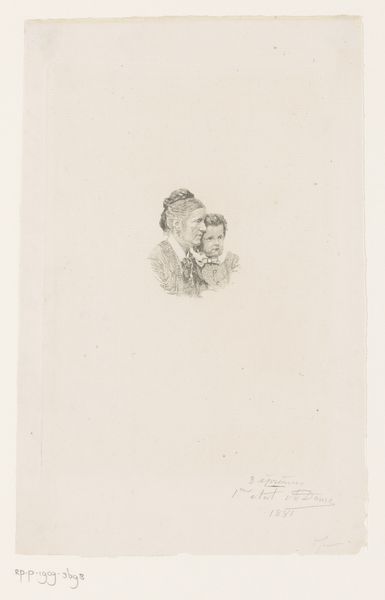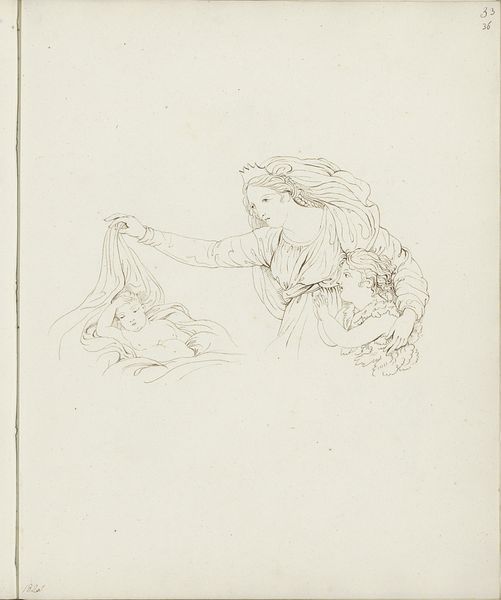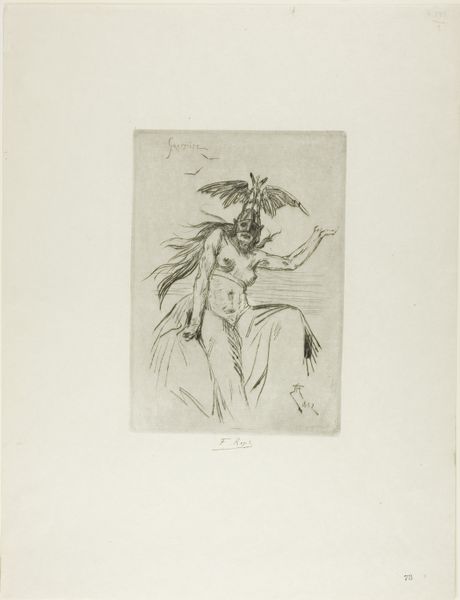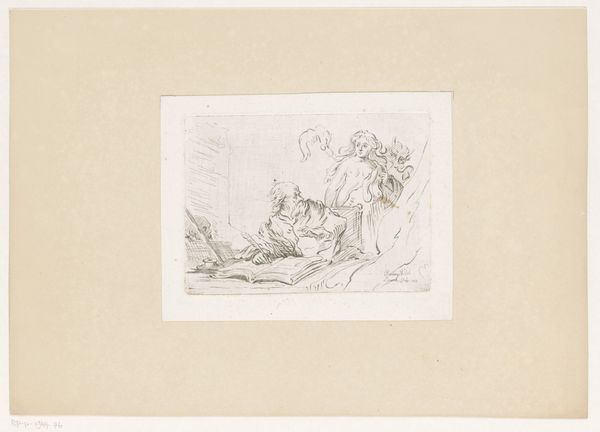
Holy Family? with Angels l.1: The March of the Intellect c. 19th century
0:00
0:00
drawing, print, pencil
#
drawing
# print
#
etching
#
figuration
#
pencil drawing
#
pencil
#
history-painting
Copyright: National Gallery of Art: CC0 1.0
Editor: Here we have "Holy Family? with Angels l.1: The March of the Intellect", a 19th-century drawing and print, probably a pencil and etching. I am really struck by the sketch-like quality and ethereal nature. What catches your eye when you examine this artwork? Curator: The composition is paramount. Notice the artist’s strategic use of line and shadow to define form. The figures are clustered, creating a sense of intimacy and unity, but rendered with an interesting minimal economy. Do you observe the delicate balance between the densely worked central group and the relatively blank space surrounding them? Editor: Yes, the emptiness definitely emphasizes the huddle of bodies in the center. The angel on the left seems barely there. Why do you think the artist left so much negative space? Curator: The void may serve multiple functions. It could highlight the central group, directing the viewer's focus and emphasizing the family unit. Moreover, the sparse details and faint outlines might convey a sense of the otherworldly or transcendent, consistent with the holy subject. How does the texture and materiality, the etched line quality and layering, influence your experience? Editor: I think the lightness and almost faded quality makes it feel like a memory, not quite solid. It has an ambiguous quality, which the question mark in the title mirrors. The form suggests an iconographic depiction but does not fully commit. Curator: Precisely. The artist teases our expectations, creating a productive tension between familiarity and uncertainty. Through careful control of line and form, they engender thoughtful contemplation. Editor: That’s a different approach to reading a drawing like this; thinking of it less as a symbolic story, and more about its artistic qualities like space and composition, really changes my understanding of it. Curator: Indeed. It reframes the dialogue, shifting emphasis from narrative content to the intrinsic language of art.
Comments
No comments
Be the first to comment and join the conversation on the ultimate creative platform.
